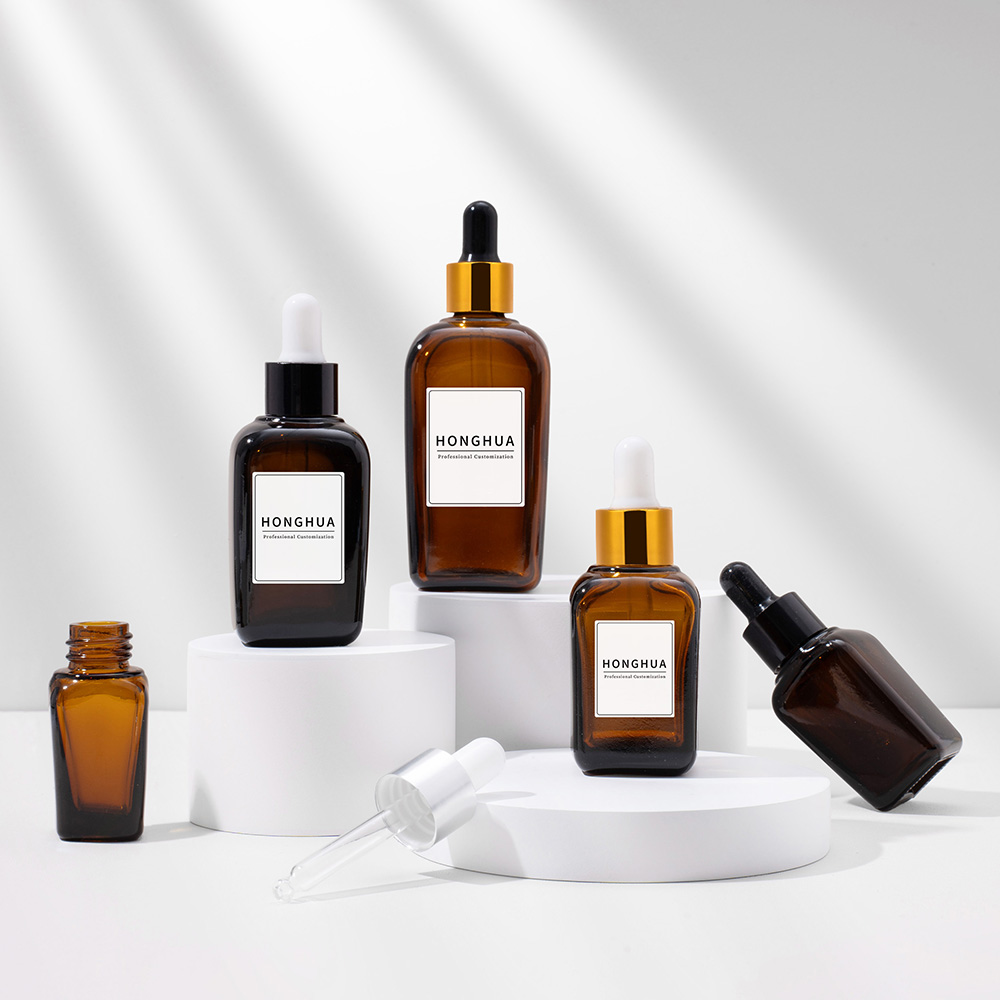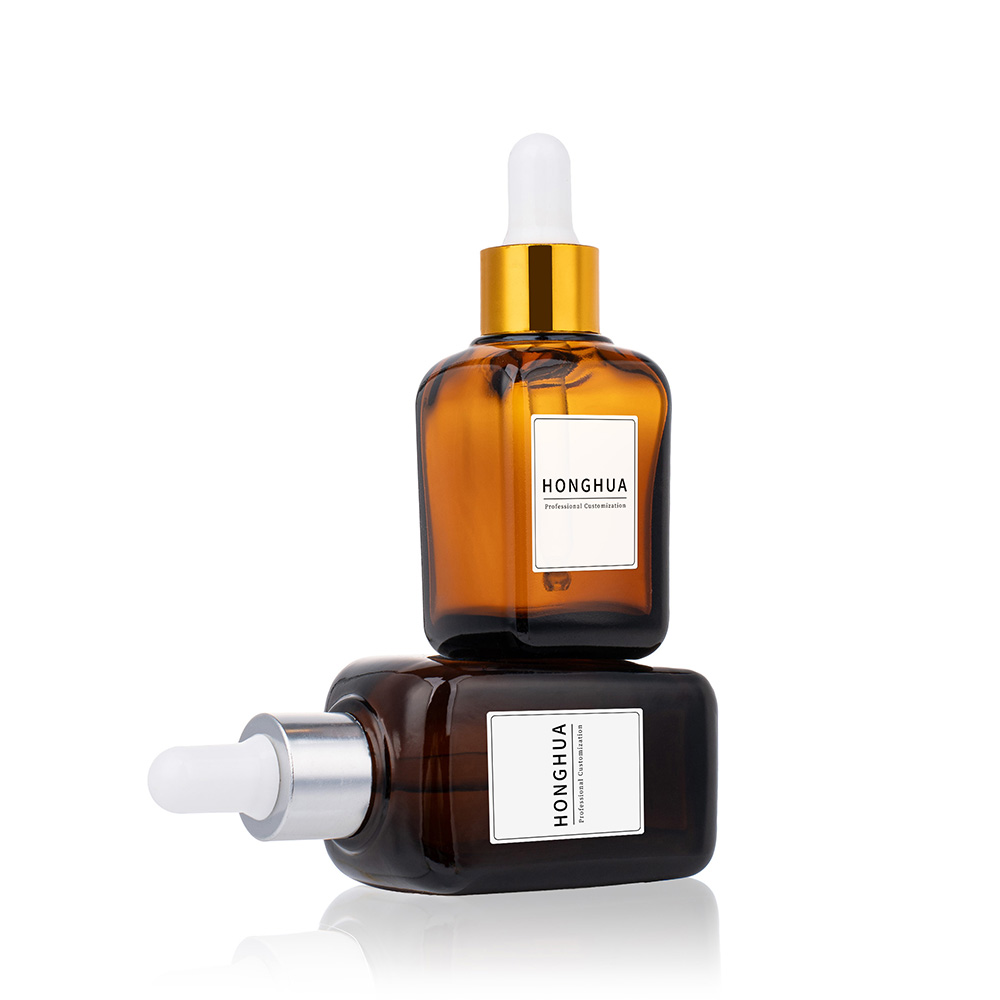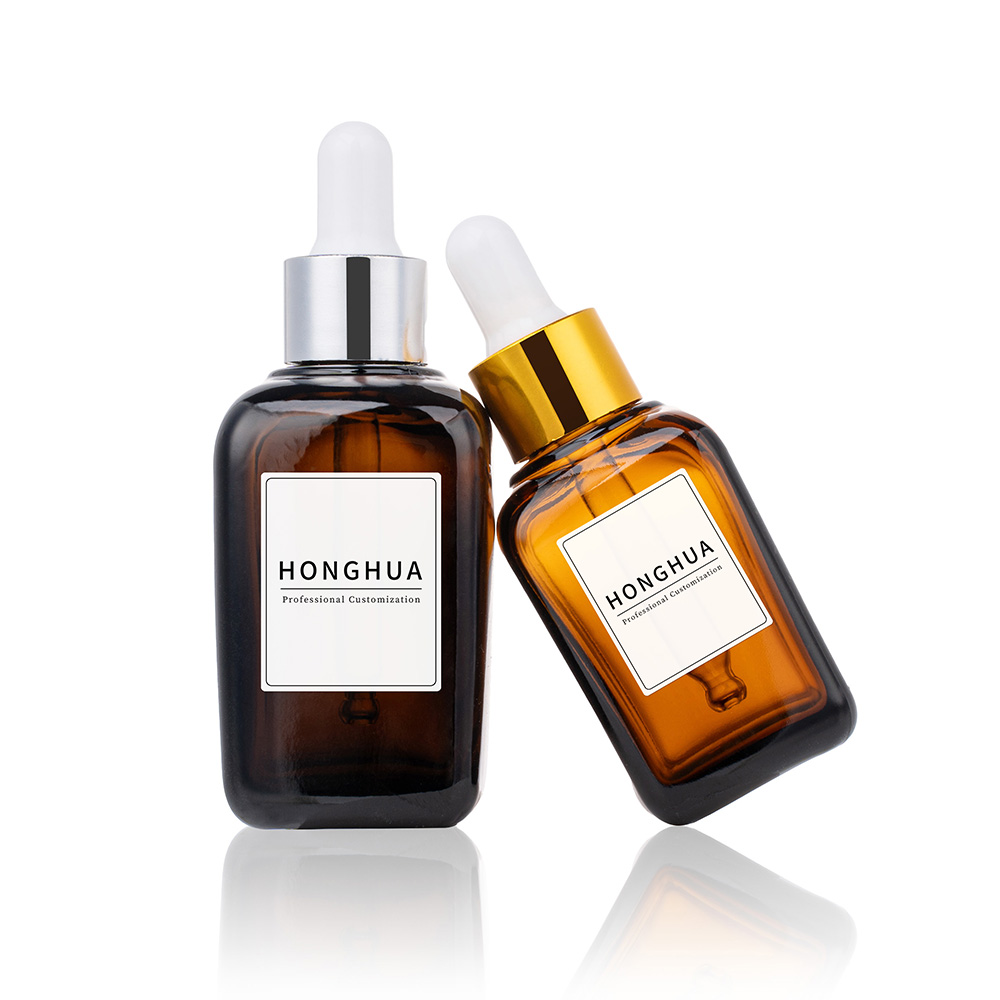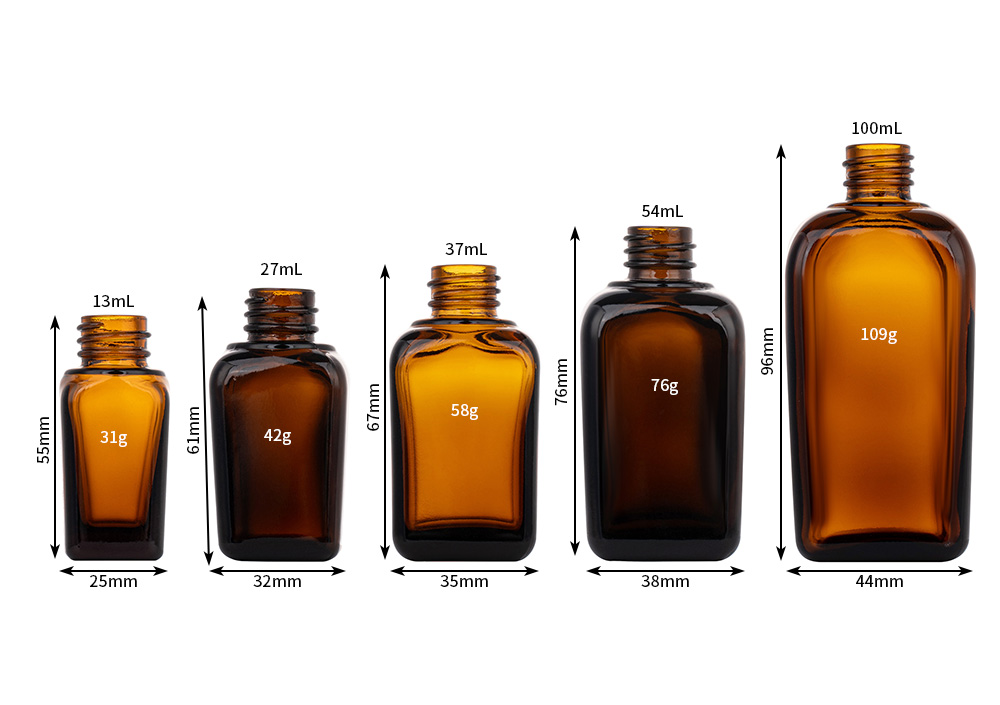In the competitive world of essential oils, your product's packaging, especially its label, is often the first interaction a potential customer has with your brand. A well-designed and informative custom essential oil label does more than just identify the contents; it communicates quality, builds trust, and ensures compliance. This article is your comprehensive guide to creating the perfect labels for your essential oil products. We'll delve into everything from design considerations and material selection to FDA regulations and application techniques, ensuring your essential oils not only look professional but also meet industry standards. As a factory owner, Allen, with 7 production lines in China, exporting high-quality glass bottles and containers to the USA, North America, Europe, and Australia, I understand the critical role that packaging plays in your success. This guide is designed to help businesses like yours, whether you're a cosmetic company, personal care product manufacturer, or an aromatherapy brand, make informed decisions about your essential oil bottle label needs.
Why Are Custom Essential Oil Labels So Important for Your Brand?
In today's crowded marketplace, the label on your essential oil bottle is a silent salesperson. For company owners and procurement officers like Mark Thompson in the USA, who are constantly seeking quality products with competitive pricing, understanding the value of a custom label is paramount. A distinctive label design helps your essential oils capture attention on shelves or online, making a strong first impression. It's a critical component of your brand identity, conveying professionalism and attention to detail. Think of your label as the face of your product; it should be inviting and informative.
Beyond aesthetics, a custom essential oil label serves a vital functional purpose. It provides essential information to the consumer, such as the oil's name, ingredients, usage instructions, and any necessary warnings. This transparency builds trust and helps customers make informed purchasing decisions. A poorly designed or cheap-looking label can detract from an otherwise high-quality product, whereas a thoughtfully crafted label enhances its perceived value. For businesses that purchase containers and then sell them to cosmetic and personal care manufacturers, providing options for excellent labeling solutions can be a significant value-add. The label is an integral part of the overall essential oil packaging.
Furthermore, custom labels for your essential oil products allow for complete brand consistency. When your logo, color scheme, and typography are cohesively presented across all your product labels, it reinforces brand recognition. This is especially crucial for building a loyal customer base. A professional label also signals that your brand is serious and reputable. It’s a small detail that can have a massive impact on how your essential oil business is perceived, ensuring your essential oil bottle label speaks volumes about your commitment to quality. Every label is a marketing opportunity.

What Key Information Must Your Essential Oil Label Include (FDA Regulations)?
Navigating FDA regulations for essential oil labels is crucial for compliance and consumer safety. While the FDA doesn't approve essential oils themselves in the same way they do drugs, they do regulate their labeling, particularly if they are marketed as cosmetic products or if therapeutic claims are made. For Mark Thompson, ensuring his clients' products are compliant is a key concern. The principal display panel (PDP) of your label, the part most likely to be shown to the consumer, must clearly state the product's identity (e.g., "Lavender Essential Oil") and the net quantity of contents (e.g., 15 ml, or for a 5ml 6ml 8ml 10ml Square Car Diffuser Glass Bottles Hanging, the specific ml).
Beyond the PDP, your essential oil label should include an ingredient list, listed in descending order of predominance. If your product is 100% pure essential oil, you can simply state the common name of the oil (e.g., "Ingredients: Lavandula angustifolia (Lavender) Oil"). The name and place of business of the manufacturer, packer, or distributor must also be clearly visible on the label. This ensures traceability and accountability. It's also vital to include any necessary warning or caution statements. For example, "For external use only," "Keep out of reach of children," or "Avoid contact with eyes." These statements on the label are critical for safe usage.
If you make any claims that suggest the essential oil is intended to treat or prevent disease, it could be classified as a drug, which comes with much stricter FDA regulations. Therefore, be mindful of the language used on your label and marketing materials. It’s always advisable to consult with a legal expert familiar with FDA labeling requirements for cosmetic and essential oil products to ensure your label is fully compliant. A compliant label not only protects your business but also instills confidence in your consumer. Each label should be a beacon of trust and accurate information. The proper label is non-negotiable.
"Accuracy in labeling is not just a regulatory requirement; it's a cornerstone of consumer trust." - Industry Expert
How Do You Choose the Right Label Size for Your Essential Oil Bottle?
Selecting the right label size for your essential oil bottle is a critical step that impacts both aesthetics and functionality. The label size needs to be proportionate to the bottle and provide enough space for all necessary information without appearing cluttered. Before deciding on a label size, you must accurately measure your container. For a standard cylindrical essential oil bottle, you'll need the height of the label area (avoiding curves at the top and bottom) and the circumference of the bottle. You can calculate the circumference (C) using the formula C = πd (pi times diameter). Many suppliers, including us at hhbottle.com, can provide exact dimension specifications for our Dropper glass bottle 5ml-100ml Amber Essential Oil Bottle with Lid.
Consider the shape of your essential oil bottle. While many are cylindrical, there are also square, rectangular, or uniquely shaped bottles. For non-cylindrical bottles, you'll measure the width and height of each panel where the label will be applied. A common approach is a front label and a back label, or a single wraparound label. For smaller bottles, like a 5 ml essential oil bottle or a roller ball bottle, space is at a premium, so the label design and label size must be meticulously planned. You might need a smaller font size, but ensure it's still legible.
It's a good practice to create a template or mock-up of your label at the proposed label size and physically apply it to your essential oil bottle. This allows you to visualize how it will look and identify any potential issues with fit or alignment before committing to a full print run. Ensure there's a slight gap (e.g., 1/8 inch or 3mm) between the ends of a wraparound label so they don't overlap, unless an overlap is part of your design. Getting the label size right is fundamental to a professional-looking essential oil packaging solution. A precise measurement for your label is key.
What Are the Best Label Materials to Make Your Essential Oils Stand Out and Last?
The choice of label materials for your essential oils is crucial because these products are often exposed to oils, water, and frequent handling. For company owners like Mark, who prioritize quality, selecting a durable and visually appealing label material is essential. Waterproof and oil-resistant materials are highly recommended. Options like BOPP (Biaxially Oriented Polypropylene) are popular because they are non-toxic, resistant to moisture and oils, and come in clear, white, or metallic finishes. A weatherproof label ensures longevity, even in humid environments like bathrooms.
Consider the finish of your label. A matte label offers a sophisticated, non-glare look, while a gloss label provides a shiny, vibrant appearance that can make colors pop. Clear labels are excellent for showcasing the color of the essential oil itself, creating a "no-label" look on the essential oil bottle. For a more luxurious or eco-friendly feel, textured paper labels or kraft paper labels can be used, but ensure they are treated or laminated to resist oils if direct contact is likely. The material of your label should also be compatible with your chosen essential oil bottle.
To further protect your label and enhance its durability, consider a laminate. Lamination adds a protective layer that shields the print from smudging, scratching, and fading, and can also add to the oil and water resistance. Whether you choose a gloss or matte laminate, this extra step can significantly extend the life of your essential oil label. Ultimately, the best label material will withstand the rigors of use, maintain its appearance, and complement your brand identity, ensuring your essential oil products always look their best. Investing in high-quality label materials from the start prevents the need for re-labeling and upholds your brand image. This attention to detail in the label reflects the quality of the essential oil within.

How Can Excellent Label Design Elevate Your Essential Oils?
An excellent label design is a powerful tool to make your essential oils stand out and connect with your target audience. The design of your essential oil label is a direct reflection of your brand's personality and values. It should be visually appealing, incorporating your logo, brand colors, and typography in a cohesive manner. Simplicity often works best, especially for products associated with wellness and purity. A clean, uncluttered design can convey sophistication and trustworthiness. Many companies offer free design templates, which can be a good starting point, but for a truly unique look, consider working with a professional designer or utilizing advanced design software like Adobe Illustrator.
Color psychology plays a significant role in label design. Different colors evoke different emotions and can influence consumer perception. For example, greens and blues often suggest natural or calming properties, while golds and silvers can imply luxury. The typography chosen for your label should be legible and align with your brand's style. Ensure there's enough contrast between the text and background for easy readability, especially for important information like ingredients or warnings. The overall design of the label should be harmonious with the essential oil bottle itself.
When you customize your essential oil label, think about your target consumer. Are they looking for therapeutic benefits, luxury, or an organic, earthy feel? Your label design should resonate with their preferences. High-quality graphics and a well-thought-out layout contribute to a premium feel. Remember, your label is often the first impression a customer has of your product, so investing in a professional and attractive design is an investment in your brand. A good design transforms a simple essential oil bottle into a desirable cosmetic or wellness product. Each label should tell a story.
What Are the Common Printing Methods for Essential Oil Labels?
Choosing the right label printing method for your custom essential oil labels depends on factors like quantity, budget, design complexity, and desired quality. For businesses procuring labels for your products, understanding these methods helps in making cost-effective decisions. Digital printing is a popular choice for essential oil labels, especially for small to medium runs or when multiple design variations are needed (e.g., different scents). It offers quick turnaround time, excellent print quality, and doesn't require expensive printing plates, making it ideal for custom labels.
Flexographic printing is more suitable for large volume orders. While it involves higher setup costs due to the creation of flexible relief plates, the per-label cost becomes very economical for high quantities. Flexo printing can produce high-quality labels with vibrant colors and is efficient for long runs. Offset printing is another option, known for its exceptional print quality and color accuracy, but it's generally used for very large quantity orders of labels due to its setup costs.
Labels can typically be supplied on a sheet or a roll. Sheet labels are often used for smaller quantities or when labels are applied by hand. Many small businesses start with printable sheet labels they can produce in-house. However, for larger production and automated application, roll labels are the standard. When discussing with your label printing provider, clarify whether you need labels on a sheet or roll, the orientation of the label on the roll (if applicable for machine application), and the desired core size of the roll. The choice of printing method and format (sheet/roll) significantly impacts the production process of your label.
Comparison of Printing Methods for Essential Oil Labels:
| Feature | Digital Printing | Flexographic Printing | Offset Printing |
|---|---|---|---|
| Best for | Small to medium runs, variations | Large runs, consistent design | Very large runs, top quality |
| Setup Cost | Low | Moderate to High | High |
| Per-Label Cost | Higher for large runs | Low for large runs | Lowest for very large runs |
| Turnaround | Fast | Moderate | Slower |
| Print Quality | Very Good to Excellent | Good to Very Good | Excellent |
| Plate Cost | None | Yes | Yes |
| Format | Sheet or Roll | Primarily Roll | Primarily Sheet (can be roll) |
How Do You Prepare Your Artwork for Label Printing?
Proper artwork preparation is essential for achieving high-quality printed essential oil labels. Misprepared files can lead to delays, unexpected results, or additional costs. Most label printing companies prefer artwork in vector format, typically an AI (Adobe Illustrator) file. Vector files can be scaled to any label size without losing quality or becoming pixelated. If raster images (like JPEGs or PNGs) are used within your design (e.g., for a background texture or a complex logo element), ensure they are at a high resolution, usually 300 DPI (dots per inch) at the final print size.
Your artwork file should include "bleed." Bleed is an extra margin of your design (usually 1/8 inch or 3mm) that extends beyond the actual cut line of the label. This ensures that if there's any slight shift during the cutting process, you won't end up with unprinted white edges on your label. Your label printing provider will specify their required bleed area. Also, keep critical elements like text and logos within a "safe zone," an area inside the cut line, to prevent them from being trimmed off. Many printers offer label templates that show these bleed and safe zones for a specific label size.
Colors should typically be set up in CMYK (Cyan, Magenta, Yellow, Key/Black) mode for printing, unless your label design uses specific Pantone (spot) colors. If you are using Pantone colors, make sure to specify them clearly. Before submitting your artwork, outline all fonts (convert text to shapes) or embed them in the file to prevent font substitution issues if the printer doesn't have the specific fonts you used. Double-check all text for typos. Providing a print-ready file according to your supplier's specifications will streamline the production process of your custom essential oil labels. This attention to detail ensures your label looks exactly as you envisioned.
What Are the Best Practices to Apply Your Labels Professionally?
Once your custom essential oil labels are printed, the next step is to apply your labels to the essential oil bottle. Professional application is key to the final look of your product. The first and most crucial step is to ensure the essential oil bottle surface is clean, dry, and free of any dust, oil, or residue. Any contaminants can prevent the label adhesive from bonding properly, leading to a label that might peel or bubble. Wiping the bottle with isopropyl alcohol can help prepare the surface.
For manual application, especially with sheet labels, take your time to align the label correctly. Start by applying one edge of the label to the essential oil bottle and then smoothly press it down, working your way across the label to avoid trapping air bubbles. A label applicator tool or even a credit card edge can help achieve a smooth, bubble-free application. If you are applying a wraparound label, ensure it’s straight and that the ends meet neatly or have the intended gap. Consistent placement from one container to the next is important for a professional look across your product line.
For larger quantities, especially when using roll labels, investing in a semi-automatic or automatic label applicator machine can save significant time and ensure consistent, professional results. These machines are designed to apply labels quickly and accurately. Regardless of the method, proper application enhances the overall quality perception of your essential oil products. A perfectly applied label complements a high-quality essential oil bottle and makes a great first impression on the consumer.
How Can You Protect Your Label from Wear and Tear?
To ensure your essential oil label remains pristine throughout the product's lifecycle, it's important to protect your label from potential damage. As mentioned earlier, choosing durable label materials like BOPP, which is inherently waterproof and oil-resistant, is the first line of defense. These materials can withstand occasional spills and handling better than standard paper labels. A weatherproof label material is particularly beneficial.
Applying a laminate over your printed label offers an additional layer of protection. Lamination can be gloss, matte, or even satin. This clear film shields the print from smudging, scratching, moisture, and oils, significantly increasing the label's durability. It also helps prevent the ink from fading due to UV exposure if your products are displayed in bright light. A laminate ensures your label design remains vibrant and legible for longer. This is a common practice for cosmetic label applications.
Proper storage of your labeled essential oil products also contributes to label longevity. Avoid storing them in direct sunlight for extended periods or in extremely humid or temperature-fluctuating environments, unless your label and container are specifically designed for such conditions. When shipping, ensure products are well-packaged to prevent labels from scuffing against each other. By taking these precautions, you can make sure your label continues to represent your brand effectively, from the shelf to the consumer's home. This protects the integrity of your essential oil bottle label.

Finding a Reliable Supplier: More Than Just the Label?
For businesses like Mark Thompson's, which source glass bottles and containers for resale to cosmetic and personal care manufacturers, finding a reliable supplier is about more than just the label itself; it's about the entire package. As Allen, a factory owner in China, I know that the quality of the essential oil bottle is just as important as the label. A premium label on a low-quality bottle sends mixed messages. That's why we, as a Custom Glass Bottle And Glass Containers Supplier, focus on providing high-quality glass that meets international safety standards. This ensures that the container you choose is worthy of the excellent custom essential oil label you design.
When sourcing, consider suppliers who understand the nuances of essential oil packaging. This includes providing bottles with secure caps and closures that prevent leakage, which could damage the label and the product. A knowledgeable supplier can also advise on bottle shapes and sizes that are best suited for efficient label application. Furthermore, dealing with a supplier who is transparent about their quality inspection processes and certifications (like FDA compliance for materials) can alleviate many of Mark’s key concerns, such as certificate fraud. Clear communication is also vital to avoid misunderstandings that could lead to shipment delays, a major pain point for any business. We also offer Round Frosted Dark Diffuser Bottle 100ml Colored Glass Reed Diffuser bottle options that require equally appealing labels.
Ultimately, a strong partnership with your supplier, whether for bottles or labels (or both), is key. Look for responsiveness, technical expertise, and a commitment to quality. While competitive pricing is important, the total cost of ownership, including potential issues from poor quality or unreliable service, should be considered. By choosing a reputable factory that values quality and clear communication for your essential oil bottle needs, you create a solid foundation for your brand, ensuring that every element, from the container to the label, reflects excellence. The label is part of a holistic product presentation.
Key Takeaways to Remember:
- First Impressions Count: Your custom essential oil label is a critical branding tool. Invest in a professional design.
- Compliance is Key: Ensure your label includes all FDA-required information to avoid legal issues and build consumer trust.
- Size Matters: Accurately measure your essential oil bottle to determine the perfect label size. Create a template for testing.
- Material Durability: Choose waterproof, oil-resistant label materials like BOPP and consider a protective laminate to protect your label.
- Print Quality: Select a printing method (digital, flexo) and format (sheet or roll) that suits your quantity and quality needs.
- Artwork Perfection: Prepare print-ready artwork with correct bleeds, resolution, and color modes (CMYK or Pantone).
- Application Precision: Ensure clean bottle surfaces and careful application to avoid bubbles and misalignment for a professional label finish.
- Supplier Reliability: Partner with reputable suppliers for both your essential oil bottle and label needs to ensure overall product quality and smooth operations.

Post time: May-13-2025








